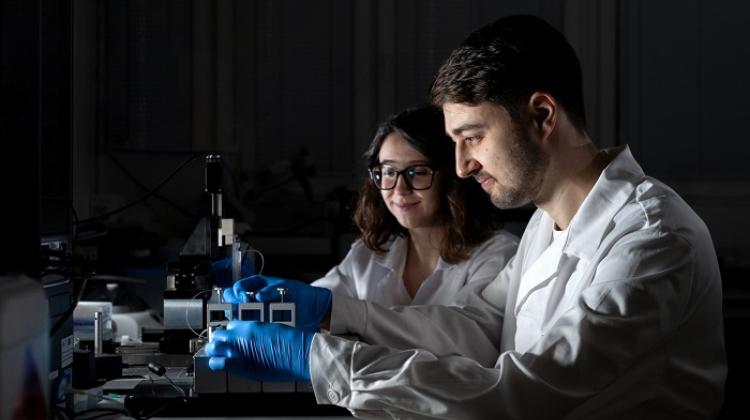Biobatteries catch a breath

Researchers at the Institute of Physical Chemistry PAS in Warsaw developed a breathing biobattery with a relatively high voltage and stability. The main feature of the new power source is a cathode that takes oxygen from the air.
The Institute of Physical Chemistry PAS developed a high-performance electrode for biocells and oxygen-zinc biobatteries. Once placed in the cell, the new biocathode for several hours produces a voltage higher than the value obtained in the existing similar power sources. The device "breathes": it works at full capacity when it can collect oxygen directly from the air, reported the Institute representatives.
"Man increasingly uses devices that assist in the functioning of the body. Nowadays they are pacemakers and hearing aids, tomorrow we will have contact lenses with automatically adjusted focal length or computer displays generating the image directly in the eye. None of these devices will work without an efficient and long-lasting power source. The best solution seems to be a miniature fuel biocell consuming substances naturally occurring in the human body or in its immediate vicinity" - explained the Institute representatives.
Meanwhile, ordinary batteries are not suitable for powering implants in the human body. They contain strong alkali or acids, which under no circumstances should enter the body. Battery case must therefore ensure complete sealing. But the more we reduce the battery size, the more we need to isolate it. Fuel biocells have a significant advantage: they do not contain substances dangerous to the body, so they would not need housing. To get electricity, you can simply enter electrodes into the body.
"One of the most popular electrochemistry experiments is making a potato battery by plugging in appropriately selected electrodes. We do something a little similar, except that we focus on biocells and improving the cathode. And for the whole enterprise to make more sense, we would ultimately prefer to replace the potato with a person..." - said Dr. Martin Jonsson-Niedziółka from the Institute of Physical Chemistry PAS.
The main component of the biocathode developed at the Warsaw Institute is an enzyme surrounded with carbon nanotubes and closed in a porous structure - silicate matrix deposited on the oxygen-permeable membrane. Such electrode is mounted in the wall of a small container. For the biocell to work, the container is simply filled with electrolyte - a solution containing hydrogen ions - and a zinc anode is put in. Oxygen reduction occurs in the enzyme active centres and energy is released.
In the experiments, the team of Dr. Jonsson-Niedziółka uses long known oxygen-zinc cells. The cell with new biocathode can generate electricity with voltage of 1.6 V for at least one and a half weeks. Over time, the cell performance decreases, probably due to the gradual inactivation of the enzyme in the biocathode. "This is no longer up to us, but the progress in biotechnology. If enzyme regeneration process are developed, the life of our biocathode cells could be much longer" - said Dr. Jonsson-Niedziółka.
In previous experiments, four biobatteries connected in series, equipped with the new cathode, successfully powered a two-led lamp. But before biocells based on the design developed at the Institute of Physical Chemistry PAS are marketed, scientists must solve the problem of the relatively low power, typical for all types of biocells.
"These studies are important not only because of the miniaturization of power sources for medical implants, biosensors and glowing tattoos. Processes involved in the generation of electricity in biocells are potentially suitable for use in the production of electricity on a larger scale. The limiting factor, however, are properties of the enzymes, so further progress in this area depends in significant part on the development of biotechnology itself" - concluded the Institute representatives.
PAP - Science and Scholarship in Poland
lt/ agt/ mrt/
tr. RL
Przed dodaniem komentarza prosimy o zapoznanie z Regulaminem forum serwisu Nauka w Polsce.

















